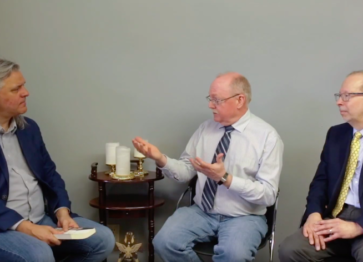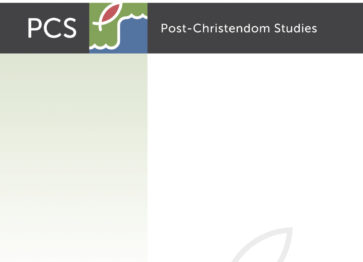Social and political divides are stark in North America today. Cultural differences, whether political, lifestyle, or religious, almost immediately escalate into zero-sum battles. Mainstream institutions from media to public education maintain that multiculturalism is the solution to this culture of toxic tribalism. Multiculturalism endeavours to overcome differences by advocating inclusiveness and celebrating diversity. In practice, however, it replaces one worldview and morality with its own multicultural one. Multiculturalism tolerates its own secular and politically correct ideology and denigrates ideological others. The aspiration of multiculturalism is correct, and it has produced many benefits. For instance, women have made great strides in the workplace. Moreover, relative to forty years ago, North American society has become more inclusive and tolerant in certain respects. But while society became more tolerant toward some things, it became more prejudiced toward others. Multiculturalism, in other words, often fails to promote actual diversity. It creates public spaces that tolerate only full compliance with the political correctness du jour.
What to do?
Gerardo Marti and Gladys Ganiel’s research on pluralist congregations details actual practices, not only the ideological and political rhetoric, of multiculturalism. They developed the term “pluralist congregations” from their research on the Emerging Church Movement. Pluralist congregations are “rare examples of religious institutions that try to facilitate rather than try to recognize or try to suppress diversity. We define pluralist congregations as social spaces that permit, and even foster, direct interaction between people with religiously contradictory perspectives and value systems.”1 Pluralist congregations combine the tension, and at times contradictory impulses, between individualism and community.2 They combine emphases on the radical integrity and autonomy of the individual and the necessity of life in community. The fulfillment of the individual Christian life requires shared life in community with others—others that are different. In this sense and paradoxically, the diverse life of community is the necessary incubator of the individual’s relationship with God and their spiritual development.3 One shortcoming of pluralist congregations investigated by Marti and Ganiel is that although they promote and experience diversity across the spectrums of Christian thought and practice, demographics, and lifestyles, they are less successful at achieving racial and ethnic diversity. Pluralist congregations, nevertheless, offer an example of the empowered diversity and ministry of the Spirit of Pentecost.
My research with Lee Beach on alternative churches in Canada took us to many churches that reflected the ethos and practices of pluralist congregations.4 I focus here on one of them—Valley Gate Vineyard in Kentville, Nova Scotia—because it embodies the multicultural promise of Pentecost.5 Valley Gate’s home is a renovated theatre in downtown Kentville. The church is demographically diverse—e.g., professional and working classes, mental health patients, people recovering (or not) from substance abuse. They describe their worship as postmodern and artistic. Sunday morning worship services are the product of team collaboration and are rarely the same. They integrate multi-media, arts, music, dialogue, and various traditions of Christian liturgy. Teaching is part of the worship experience, but not a didactic sermon from the pastor.
The church’s worship and life radiate outward to ministry for the community. Their theology of contextual and missional ministry inspires organic ministries. They are organic in two ways. They arise from the vision casting and brainstorming of people in the church and from the needs of the community. While renovating the theatre, they noticed that a commuting workforce makes downtown Kentville bustle with life during the day but leaves it deserted in the evening. They also “got to know the kids” in Kentville. That led them to open an ice cream parlour that evolved into a café. People in the church with relevant skills and background assumed leadership and they hired local young people to staff the parlour and café. Kentville is also home to youth and adult correctional centres, social assistance agencies, and a regional hospital. The café led to building relationships with the professionals that work for these social and health services. Church members also became aware that people leaving the correctional facilities needed support transitioning to a stable and healthy life. In response, the church initiated The Refuge, which provides transitional housing for up to ten men (from three months to three years) and social skill development. Members of The Refuge usually are people at risk of homelessness due to complications from substance abuse and/or discharge from a correctional facility. In short, Valley Gate’s diverse participants give rise to its eclectic and dynamic worship. They adapt ministries to the social circumstances of their community and connect people’s gifts and talents to those ministry opportunities.
Valley Gate Vineyard is an example of the empowerment of the many tongues of Pentecost and of the outpouring of the Spirit on “‘all people . . . sons and daughters . . . young men . . . old men . . . even on my servants, both men and women’” (Acts 2:17–18). The diverse people of Valley Gate, the many tongues of Pentecost, are not transcended in a new mono-ecclesial unity of the Spirit. Valley Gate embodies actual diversity, especially class and demographic. The many tongues of Pentecost arise from the Spirit. They find their unity in and from the Spirit. They are gifts of the Holy Spirit to create human flourishing in community with each other—in this case, Kentville, Nova Scotia.
Finding inspiration for pentecostal renewal within a Vineyard congregation is fitting. Renewal is intrinsic to the pentecostal movements. They began as renewal movements within the wider Christian churches. The Vineyard churches are a charismatic renewal within the pentecostal renewal movements. The place and people of Valley Gate Vineyard are also significant. The outpouring of the Spirit is taking place with those just out of prison and others escaping the bondage of substance abuse and the desperation of life on the streets. It includes nurses, social workers, and small business owners empowered by the Spirit of Pentecost to embody the gospel at the “ends of the earth” far removed from the world’s centers of power and influence (Acts 1:8). Churches like Valley Gate Vineyard point the way forward for Christian life and ministry in the increasingly post-Christian world of North America.
Current cultural forces in North America today threaten the formation of redemptive communities of inclusive diversity. Political and cultural partisanship assume differences are insoluble. Visceral fear and loathing demonize religious and cultural differences. The inclusive diversity created by the Spirit of Pentecost is contrary to forces and movements of nativism, ethnocentrism, and political partisanship. The vision and rhetoric of secular multiculturalism is on the mark. Indeed, the goal of multiculturalism to transcend bigotries and create inclusive and diverse communities stands in continuity with the Spirit of Pentecost. Unfortunately, bereft of the Holy Spirit that empowers the many tongues and the social transcending communities of Pentecost, it can lead to ideological intolerance and social ghettoes. Congregations empowered by God’s Spirit to embrace others in love, however, can foster authentic multicultural communities and practices. Pentecost promotes the manifold diversity that arises from human beings bearing the Spirit breathed divine image. The Spirit of Pentecost empowers public witness that advocates on behalf of all people. Valley Gate’s worship and shared church life and their ministry in the community of Kentville embody the organic emergence of the diverse tongues of the Spirit of Pentecost.
Endnotes
1. Gerardo Marti and Gladys Ganiel, The Deconstructed Church: Understanding Emerging Christianity (New York: Oxford University Press, 2014), 34.
2. Marti and Ganiel, The Deconstructed Church, 35.
3. Marti and Ganiel, The Deconstructed Church, 35 and 190–92.
4. A Lilly Collaborative Research Grant provided funding for this project. The majority of our research took place from 2012 to 2014. The Lilly Grant enabled us to investigate alternative and emerging churches across Canada in British Columbia, the Prairie Provinces, Ontario, Quebec, and the Maritimes.
5. http://www.valleygate.org/
*The views and opinions expressed in this article are those of the author and do not necessarily reflect the official policy or position of McMaster Divinity College or the Centre for Post-Christendom Studies.*



